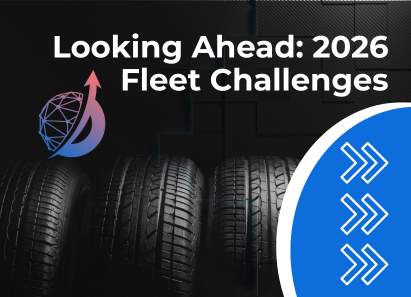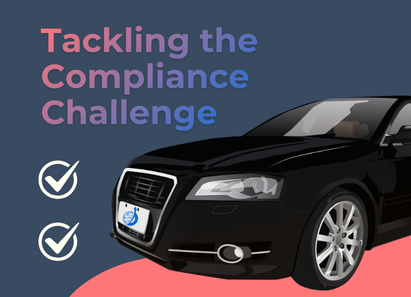
This year’s El Niño winter is expected to bring cool, wet weather to the U.S. south and warmer, dryer weather to the north. But no matter where your fleet is located, winterization is critical. Now is the time to get serious about preparing your fleet vehicles for harsh, icy weather and whatever else Mother Nature throws its way this winter.
When you hear “winterization,” the first thing that comes to mind is likely driver safety — and the importance of that can’t be overstated. According to the U.S. Department of Transportation, 24% of weather-related crashes occur on snowy, slushy or icy pavement. An additional 15% happen during snowfall or sleet. But beyond its ability to reduce safety risks, winterization also brings another benefit: enhanced operational efficiency. Keep reading for our quick guide to winter-proofing your fleet for peak safety and performance.
What the Cold Does to Your Vehicle’s Performance
During winter, conventional gas vehicles typically suffer a 10% to 20% fuel economy loss in city driving and a 15% to 33% loss on shorter trips. Why? Because nearly every part of a vehicle is impacted by the cold and snow.
Colder temperatures can change your oil’s viscosity, making it flow slower. That goes for both traditional oil and synthetics, which perform better in cold weather but can still thicken under chilly conditions. (Pro tip: Synthetics are also better at resisting freezing in frigid temps.) When your motor oil thickens, it’s more difficult to start your vehicle — and your engine often doesn’t run as effectively once it does get juiced up.
During winter, we put our electrical systems to the test. As the days grow shorter, we tend to leave the lights on longer and run the heater more. At the same time, the cold weather makes it more difficult for your battery to charge. Older batteries typically struggle more to power starters and other components under cold conditions. And when it’s wet outside, moisture can lead to corrosion. We don’t have to tell you how that impacts the performance of your vehicle’s electrical components.
For every 10° F drop in air temperature, tire pressures decrease about 1 pound per square inch. Cold weather can also make a tire’s rubber brittle; this is especially the case if you’re using summer tires. All-weather tires can also lose their treads when the temperature drops. Combined, these issues can cause safety risks and contribute to poor fuel economy during the winter months.
What else contributes to poor vehicle performance in the winter? The density of cool air, which increases the amount of aerodynamic drag that your vehicle encounters. This dynamic is especially significant when you’re traveling at highway speeds. Meanwhile, snowy or icy roads reduce driving speeds, which in turn reduce a vehicle’s fuel economy. The U.S. DOT estimates that arterial speeds decline by up to 40% on snowy or slushy roads. Even in light snow, highway speeds drop by anywhere from 3% to 13%. The Department of Energy cites speeds below 30 to 40 mph as especially draining for your vehicle’s fuel economy.
Luckily, the right fleet winterization strategy can prepare your vehicles for top performance and minimize safety risks.
Your Fleet Winterization Checklist
When you’re busy managing a fleet, winterization can feel like a daunting task. And with December already at the midway point, you might think it’s too late — but it’s not. By using this quick checklist, you can prioritize the winterization tasks that are most critical to keeping your drivers and vehicles safe. (If you’re up-to-date on routine maintenance checks, you’re already one step ahead.)
Check the Battery
Test each battery’s voltage regularly to make sure it’s in an optimal range; that’s between 12.4 and 12.9 volts when the vehicle is turned off. Also check for signs of erosion or buildup that could prevent your battery from performing reliably in wintry weather conditions.
Is the asset’s battery more than three years old? It might be time to get a new one, especially considering how much harder batteries have to work when the temperature drops.
Inspect Your Tires
If you’re in an area where temperatures drop below 45 degrees in the winter, consider equipping your vehicles with winter tires. If you already have winter tires, or live in an area where all-season will do, make sure to inspect each tire for signs of damage and/or worn-down treads. Your treads should be 4/32 of an inch or more.
Most passenger cars require a psi between 30 and 35, but this can vary per vehicle. Check your owner’s manual for your asset’s optimal tire pressure. Then, cross-check your tire’s psi against that benchmark. It’s ideal to do a pressure check every four weeks in the winter. For the best accuracy, perform the check before the vehicle is operated for the day.
Examine the Air System
In today’s vehicles, compressed air is used for many essential functions, from air brake systems to automated manual transmissions and safety technologies. Before winter sets in, check the vehicle’s air system to make sure there’s no moisture. If moisture is present, it could freeze and cause the system to shut down.
Survey Your Brakes
In slippery winter road conditions, high-performing breaks are a must. Do you hear a high-pitched sound or notice a burning smell when braking? It might be time for a replacement. You can also visually inspect your brake pads, which should have a minimum depth of 3/32 of an inch. Any less and you likely need a new pair.
Don’t Forget the Oil Filter
Get your oil filter checked and replaced, if needed. Cold weather can cause significant oil pressure changes, which puts extra stress on your filter.
Inspect Your Wiper Blades
Make sure each vehicle’s wiper blades are in good condition, with no cracks or frays. If you’re in a region with significant wintry weather, you can also explore heavy-duty blades designed for clearing away ice and snow.
Top Off All Fluids
Before wintry weather arrives, make sure each vehicle is topped off with all the essential fluids. That includes windshield washer fluid, antifreeze, power steering and brake fluids, transmission fluid and, of course, motor oil. Pro tip: Your owner’s manual should include recommendations for fluid types in severe conditions. Make the manual your go-to resource for selecting the right fluid types for wintry weather.
Prepare a ‘Winterization Kit’
Make sure each vehicle has winter-weather essentials, including blankets, snow brushes and an ice scraper. It should also include a first-aid kit, jumper cables, a flashlight and warning devices in case of an accident.
Also stock each vehicle with extra washer solvent. If you’re driving on a road treated with salt, the road spray can cause havoc on your visibility — and require a surprising amount of washer solvent to clear away from your windshield.
The Importance of Driver Education
Maintenance checks and winter-weather upgrades are critical components of any winterization strategy. However, driver education can also play a key role in reducing safety risks and enhancing operations during the winter season. Consider adding winterization sessions to your existing driver education program to encourage safe actions when the weather turns severe.
In addition to winter driving safety, your driver training can also include these best practices for better cold-weather performance:
- Keep the vehicle parked in a warm place (i.e., a garage) when not in use. Doing so boosts the initial temperature inside the cabin and engine, which increases fuel efficiency.
- Combine trips to reduce the amount of time spent driving with a cold engine.
- Check tire pressure once per month.
- Keep cameras and sensors clear of ice and snow so that they function as intended.
Is your fleet already utilizing telematics and GPS? Consider using that data to develop driver-specific safety profiles. Then, leverage those insights to customize your winter safety training based on each driver’s specific behaviors behind the wheel. (Hint: The same approach can be applied to your driver education all year long.)
The Bottom Line on Fleet Winterization
Winterization can seem daunting for busy fleet managers. But with the right combination of maintenance and driver education, you can prepare your fleet for optimal safety before the weather turns cold — and boost overall performance even amid snow, ice and dwindling temperatures.
Do you need help winterizing your fleet? Contact Onward’s experts. We’re here to help you achieve peak performance and safety, even during harsh winter weather.




